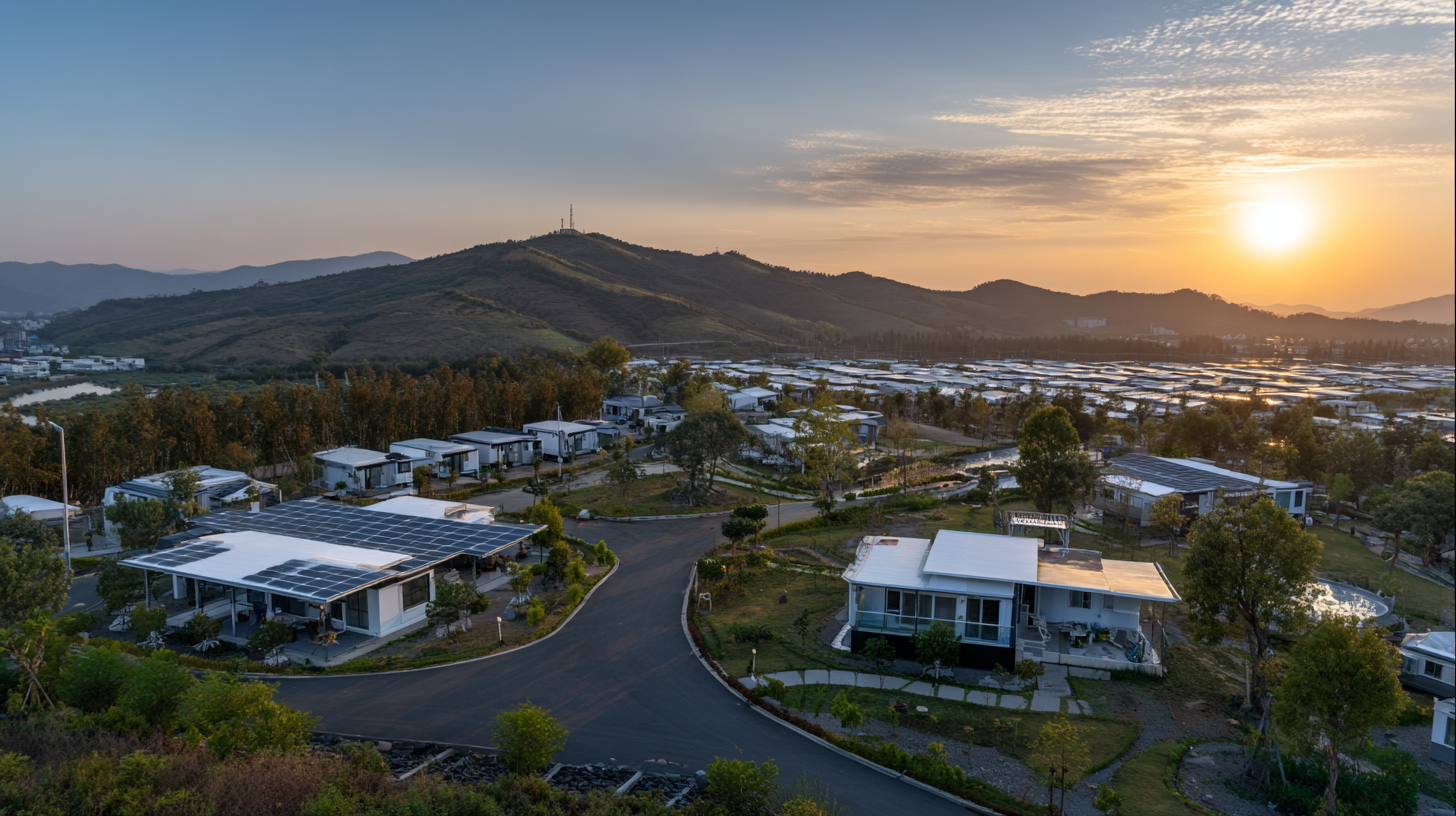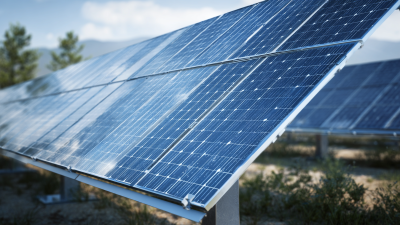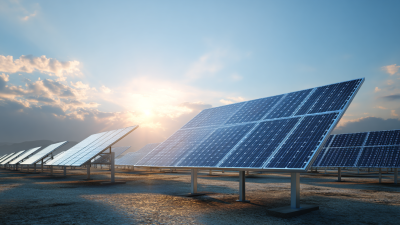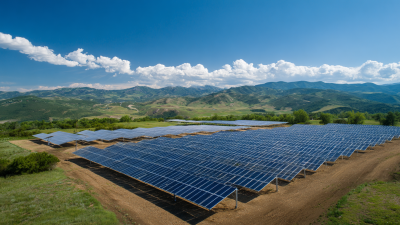How to Uncover the Solar Potential of Your Property for Maximum Energy Savings
 Uncovering the solar potential of your property is a pivotal step towards maximizing energy savings and embracing a more sustainable lifestyle. As the demand for renewable energy solutions grows, understanding how sunlight interacts with your specific property can open doors to significant financial benefits and environmental responsibility.
This guide will explore practical methods to assess and enhance your property's solar potential, helping you to make informed decisions about solar energy systems. From evaluating your location and roof orientation to considering local climate conditions and available technologies, you will gain insights essential for harnessing solar power effectively.
Not only can you lower your utility bills by tapping into your property’s solar potential, but you also contribute to a greener future.
Join us as we delve into the actionable steps to transform your property into a solar energy powerhouse.
Uncovering the solar potential of your property is a pivotal step towards maximizing energy savings and embracing a more sustainable lifestyle. As the demand for renewable energy solutions grows, understanding how sunlight interacts with your specific property can open doors to significant financial benefits and environmental responsibility.
This guide will explore practical methods to assess and enhance your property's solar potential, helping you to make informed decisions about solar energy systems. From evaluating your location and roof orientation to considering local climate conditions and available technologies, you will gain insights essential for harnessing solar power effectively.
Not only can you lower your utility bills by tapping into your property’s solar potential, but you also contribute to a greener future.
Join us as we delve into the actionable steps to transform your property into a solar energy powerhouse.
Assessing Your Property's Sun Exposure and Orientation for Solar Potential
 Assessing your property's sun exposure and orientation is crucial for maximizing solar potential and energy savings. Begin by observing the surrounding environment, noting any trees, buildings, or hills that may cast shadows on your roof throughout the day. The sun’s path varies with the seasons, so consider how these obstacles affect sunlight during both summer and winter. Ideally, roofs that face south, southeast, or southwest capture the most sunlight for solar panels.
Assessing your property's sun exposure and orientation is crucial for maximizing solar potential and energy savings. Begin by observing the surrounding environment, noting any trees, buildings, or hills that may cast shadows on your roof throughout the day. The sun’s path varies with the seasons, so consider how these obstacles affect sunlight during both summer and winter. Ideally, roofs that face south, southeast, or southwest capture the most sunlight for solar panels.
Next, utilize tools such as solar pathfinders or satellite imagery to accurately measure sun exposure throughout the day. These tools can help identify peak sun hours, which are essential for determining the efficiency of solar installations. Additionally, take note of the roof’s pitch and angle, as optimal positioning can enhance energy absorption. By understanding and evaluating your property’s unique sun exposure and orientation, you can make informed decisions on solar panel placement, ensuring significant energy savings and a more sustainable energy future.
Evaluating Roof Condition and Space for Solar Panel Installation
Evaluating the roof condition is the first crucial step in uncovering the solar potential of your property. A roof's age, materials, and structural integrity are essential factors to consider. A roof that is nearing the end of its lifespan may require repairs or replacement, which can complicate solar panel installation. Furthermore, roofs that are flat or have an angle may influence how much sunlight the panels capture. Inspecting for any existing damages, such as leaks or missing shingles, is vital to ensure that the roof can support the additional weight of solar panels.
In addition to assessing the roof’s condition, measuring the available space for solar panel installation is equally important. Understanding the dimensions and orientation of your roof will help determine the optimal layout for solar panels. Ideally, panels should be installed on a south-facing slope for maximum sun exposure. Additionally, evaluating potential shading from trees, chimneys, or nearby buildings will allow you to calculate the effective area available for solar energy collection. By thoroughly assessing both roof condition and space, property owners can make informed decisions that contribute to significant energy savings.
Solar Potential Evaluation: Roof Condition and Size
This chart illustrates the potential energy savings per year based on the condition of the roof and efficiency of solar panel installation. Properties in excellent condition can save up to $3000 annually, while those classified as poor may only save $500.
Understanding Local Regulations and Incentives for Solar Energy Usage
When considering the installation of solar energy systems, understanding local regulations and available incentives is vital for maximizing potential energy savings. Different regions implement various policies that either promote or hinder solar energy usage. For instance, states like Texas offer a range of incentives such as tax credits and rebates that significantly reduce the financial burden of solar installation. These policies play a critical role in encouraging homeowners and businesses to adopt solar technologies, making it essential to investigate the specific incentives available in your area.
Moreover, recent initiatives in various locales, including Ohio and Maine, reflect a growing recognition of solar power’s impact on local economies and the environment. In Ohio, new legislation not only supports traditional energy sources but opens up new avenues for solar developers, enabling them to tap into state resources. Meanwhile, Maine’s commitment to solar energy illustrates the increasing availability of incentives aimed at boosting renewable energy adoption statewide. By staying informed about these local regulations and incentives, property owners can fully leverage the solar potential of their properties while contributing to a sustainable energy future.
How to Uncover the Solar Potential of Your Property for Maximum Energy Savings - Understanding Local Regulations and Incentives for Solar Energy Usage
| Property Type | Location | Solar Potential (kW) | Incentives Available | Estimated Savings ($/year) |
|---|---|---|---|---|
| Residential | California | 5.6 | 25% Tax Credit, Local Rebates | $1,200 |
| Commercial | Texas | 30.4 | 30% Tax Credit, State Incentives | $4,500 |
| Agricultural | Florida | 15.2 | Federal Grants, Local Incentives | $2,800 |
| Multi-Family | New York | 22.1 | State Tax Credit, Utility Programs | $3,600 |
Calculating Energy Needs and Savings Potential from Solar Power
When considering solar power for your property, calculating your energy needs is crucial. Begin by reviewing your past electricity bills to identify trends in consumption. Take note of peak usage months and the total kilowatt-hours (kWh) consumed annually. This information will serve as a foundation for estimating how much solar energy you can generate and how much you could realistically save.
Tips for calculating your energy needs:
1. **Analyze Your Energy Consumption**: Break down the different appliances and their corresponding energy usage to get a clearer picture of which devices consume the most power.
2. **Consider Seasonal Variations**: Recognize that your energy needs may fluctuate with the seasons, particularly if you rely on heating or cooling systems. Factor these changes into your calculations for a more accurate assessment.
Once you have a clear understanding of your energy needs, you can estimate the potential savings from solar power. Research local solar incentives and rebates, which can significantly impact your return on investment. Additionally, keep in mind that excessive energy usage could reduce savings, so optimizing energy efficiency in your home prior to installation can amplify your solar investment’s benefits.

Exploring Financing Options for Solar Installations on Your Property
Exploring financing options for solar installations on your property can significantly enhance your ability to go green while maximizing energy savings. There are several avenues available, including federal and state incentives, which often provide tax credits that can reduce the overall cost of the system. Many states offer attractive rebates that further lower your upfront expenses. Understanding these financial incentives is crucial in calculating your potential savings and return on investment.
In addition to government incentives, various financing models exist to facilitate your solar transition. Options such as solar loans allow you to pay for your system over time while still benefiting from energy savings immediately. Alternatively, leasing agreements let you install solar systems without significant upfront costs, with the expectation that you'll pay lower monthly electric bills. Evaluating these financing options can help property owners not only to manage initial costs effectively but also to align their budget with long-term energy savings goals.
Related Posts
-

10 Proven Tips to Maximize Solar Potential for Your Business
-

Unlocking the Specifications of the Best Solar Solutions for Global Buyers
-

Harnessing 2025 Trends in Solar Technology to Choose the Best Solar Panels for Your Energy Needs
-

How to Choose the Best Solar Solutions for Your Business Needs
-

10 Essential Tips to Maximize Your Solar Projects Success
-

7 Best Solar Systems Innovations Transforming Global Energy Markets
